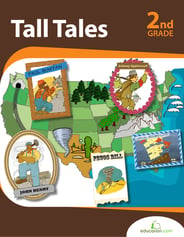- Worksheets
- Games
- Lesson Plans
- Workbooks
- Exercises
- Science Projects
- Skills Progression
- More
Search 2nd Grade Reading & Writing Educational Resources : Page 5
1,815 filtered results
1,815 filtered results
2nd grade
Reading & Writing
Sort by

Irregular Verb Match
Interactive Worksheet
Irregular Verb Match
Do your students struggle to remember irregular verb tenses? Use this great matching activity to help students connect the present to the past. They'll be using irregular past tense verbs with confidence in no time!
2nd grade
Reading & Writing
Interactive Worksheet

The Boy Who Cried Wolf Prediction and Comprehension
Worksheet
The Boy Who Cried Wolf Prediction and Comprehension
This worksheet helps your child focus on prediction and comprehension in "The Boy Who Cried Wolf." Kids will read the classic fable and answer written prompts.
2nd grade
Reading & Writing
Worksheet

Weekly Reading Log
Worksheet
Weekly Reading Log
Reading has so many benefits for kids, such as improving vocabulary and language skills and helping to develop imagination and concentration. Reading logs are a great way for you and your students to keep track of their reading throughout the week!
2nd grade
Reading & Writing
Worksheet

Personal Narrative Organizer: Surprise!
Worksheet
Personal Narrative Organizer: Surprise!
Surprise! Young writers are prompted to write a personal narrative about a time they were surprised. Students will practice sequencing and prewriting skills as they use this fun watermelon-shaped graphic organizer to plan out their personal narrative.
2nd grade
Reading & Writing
Worksheet

What's the Main Idea?
Interactive Worksheet
What's the Main Idea?
The main idea is the most important idea in a paragraph. With this worksheet, students will read the paragraphs carefully then circle the statement that best fits the paragraph's main idea.
2nd grade
Reading & Writing
Interactive Worksheet



















